Conservation with a little help from our (fisher) friends
“It’s time for us to realize that conservation isn’t about biology anymore. If you are standing on the shore of some poor little town, looking out over the water trying to figure out how to save some inspiring ocean species, just stop and turn around 180 degrees. That’s where your work is.” Erik Vance, 2017.
We know it seems ridiculous to write a blog about a blog, but we often use this quote in our course materials when teaching others about how conservation science is, and should be, changing.
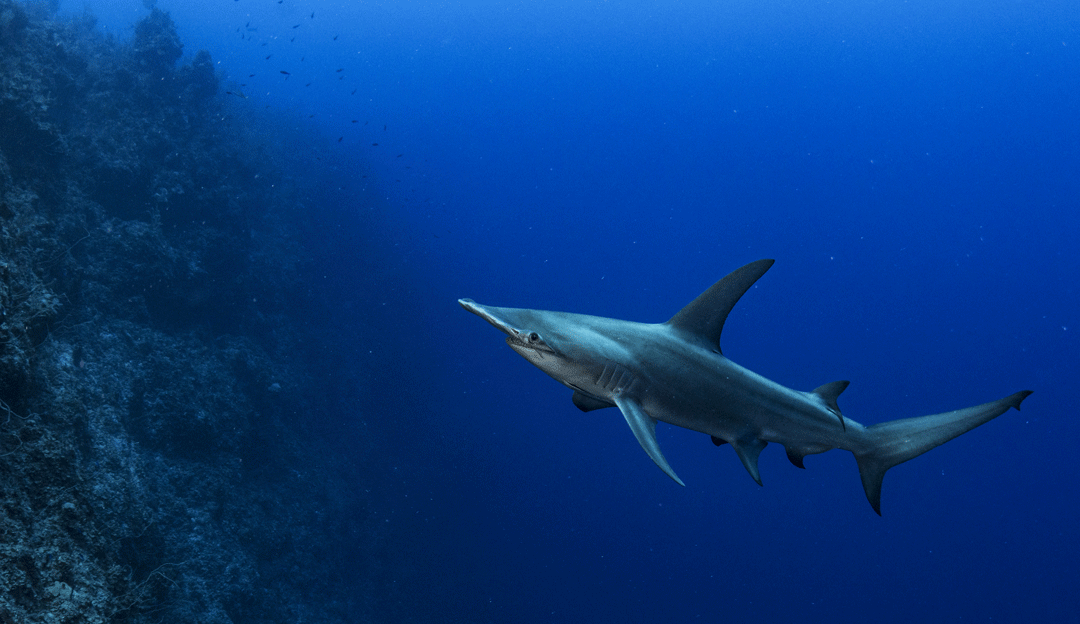
Great hammerhead shark. Photo © Shane Gross | Shuttersock
Like Erik Vance, we are biologists with a passion for conservation, and like Erik, we had originally approached a conservation issue with a biological mindset and the idea that more protections and enforcement would be the solution. He, with the Vaquita, the world’s smallest and most endangered cetacean, and us, with our larger and less endangered elasmobranch.
Our project began with a series of washed-up great hammerheads on the beaches of Florida. Many concerned citizens approached us, and as biologists, we wanted to determine the biological cause of these mortalities, with a suspicion that exhaustion or capture-stress from fishing was the likely culprit. Satellite tags in hand, we approached some ‘YouTube-famous’ recreational shark anglers to see if we could join them and tag the sharks they were releasing from the shore. They were eager to disprove the myths that they were all monsters that were not concerned with the fate of the hammerheads and happy to help! We would let them fish and release their way but jump in quickly to punch in a tag that would detach and let us know if the shark died.
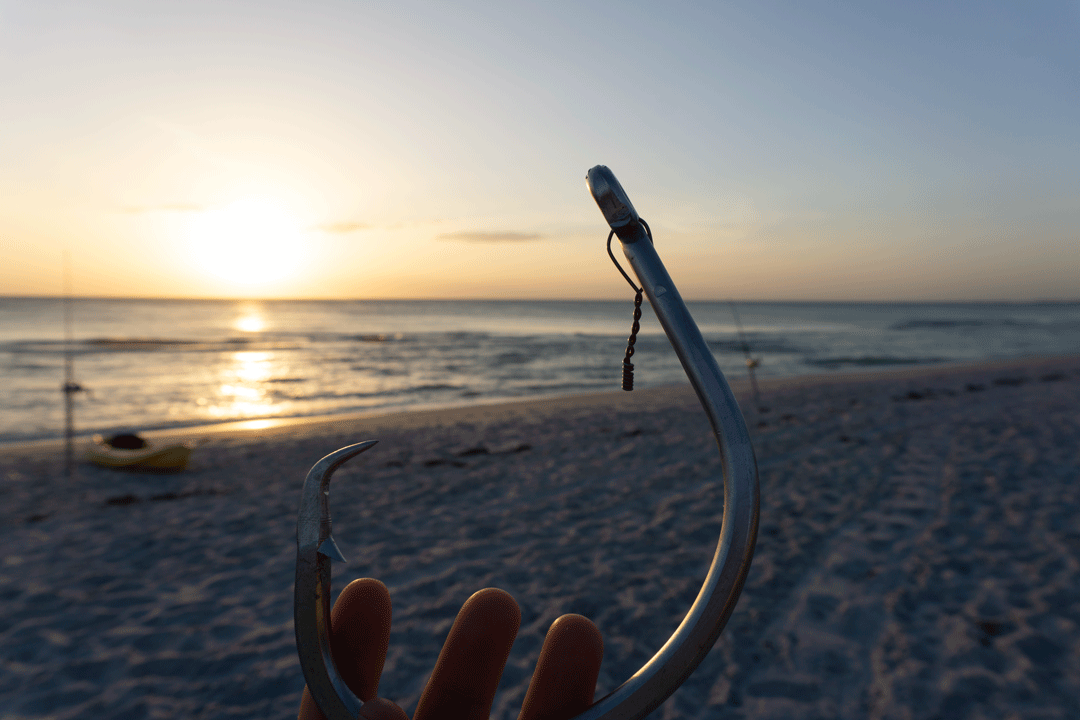
A 24/0 circle hook used by shore-based anglers to catch large coastal sharks, taken at sunset, of which we get to see a lot of! Randomly, also shown in this photograph are the detached crab pots that our anglers swam out for. We managed to rescue many 'ghost fished' critters that night, lot's to do when you're not catching any sharks. Photo © Jill Brooks
An easy question with an easy (albeit expensive) study to answer the question. That was, until we sat on the beach for four long days and nights catching nothing and getting to know the anglers and their chosen sport.
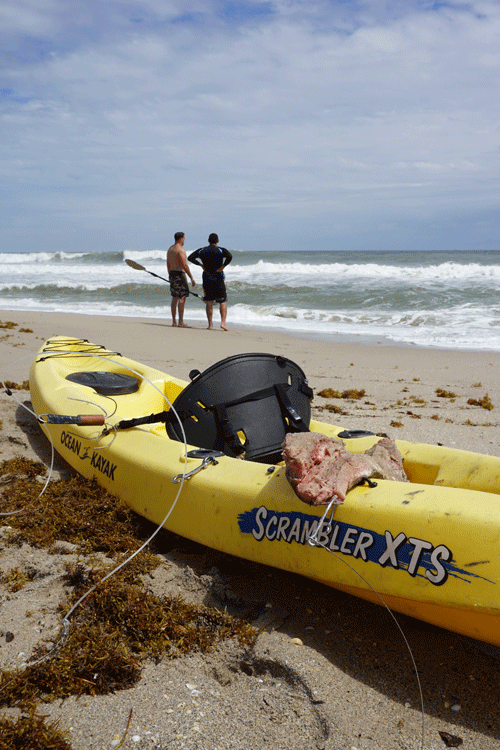
A couple of anglers assessing the surf patterns before paddling out with their baited hook and line to drop offshore. Photo © Jill Brooks
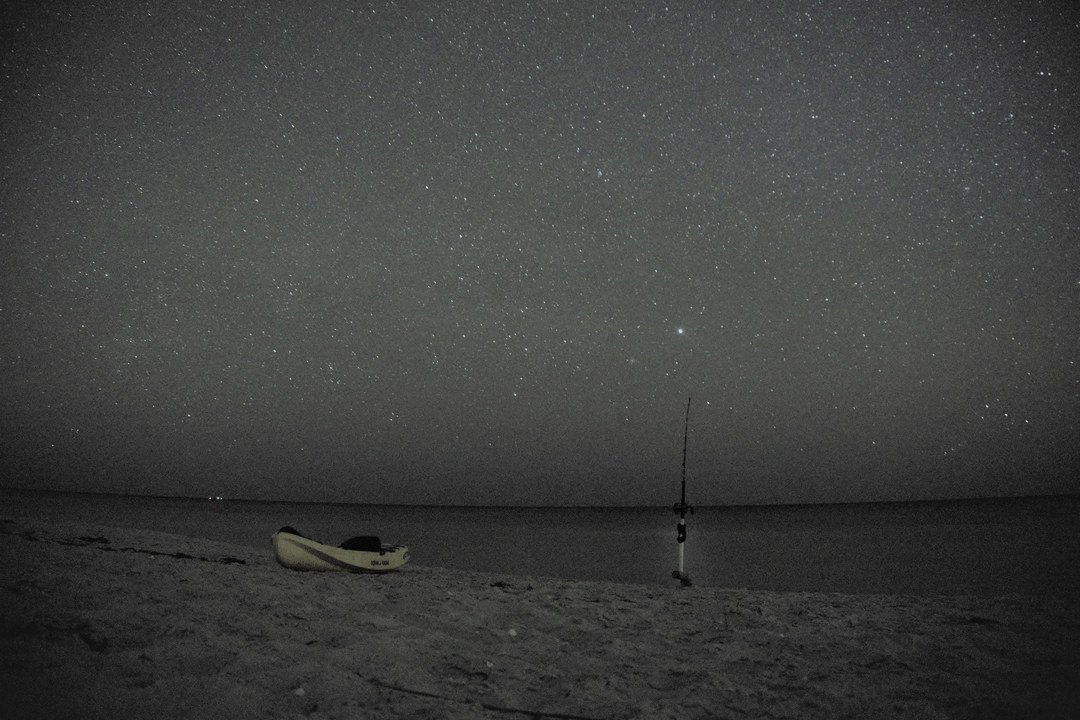
Stargazing is also now a hobby of ours after spending many nights sitting on a beach. Photo © Jill Brooks
It turns out that this fishing technique is more popular and far more complicated than we thought, that many anglers care about the safety and conservation of their catches. We also learned that there are so many different factors that may dictate if a shark lives or dies. Suddenly, our simple question and study was getting bigger, more complex, but so much more interesting!
Like Erik in his blog, we decided the human, or the sociological dimension of this conservation issue was arguably just as important as the biology, so we’ve reached out to some professionals in that field to support the project.
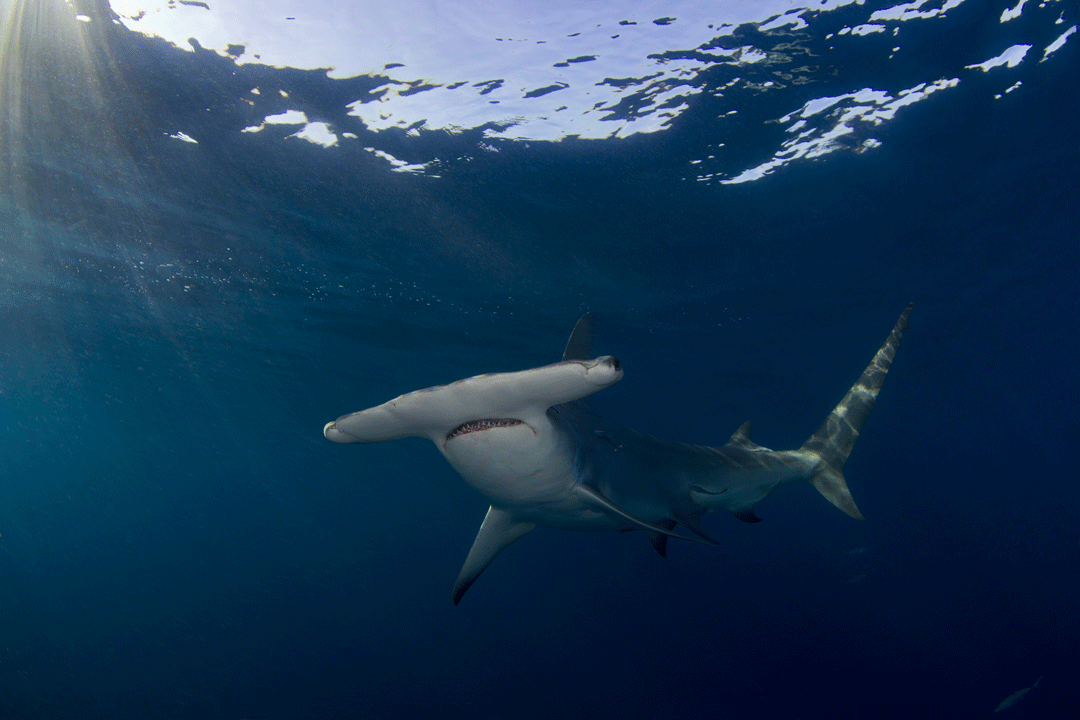
Great hammerhead shark. Photo © Matt9122 | Shutterstock
Stay tuned for our next blog on the need for multi-disciplines and the co-production of our scientific data but for now; we encourage you to check out Erik’s story about the Vaquita!
